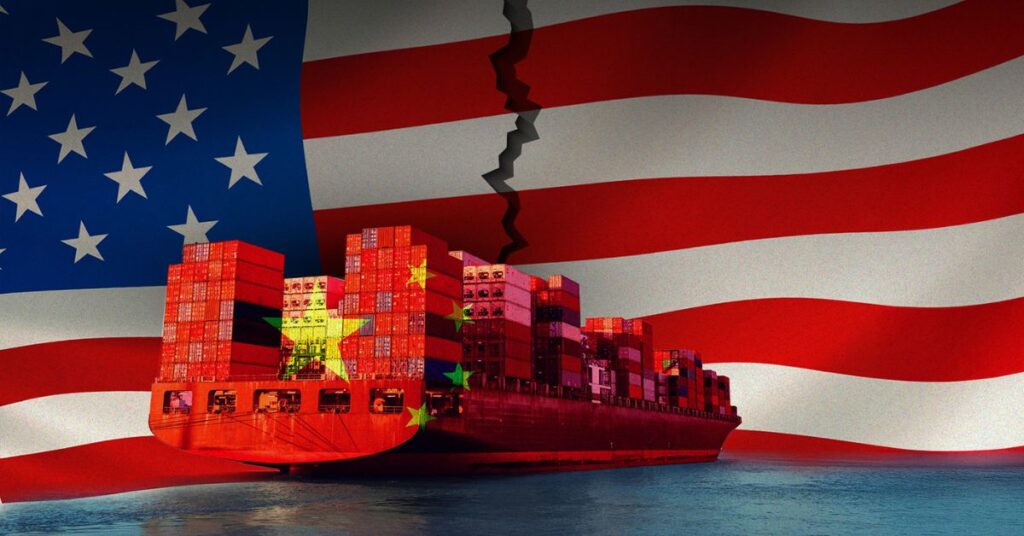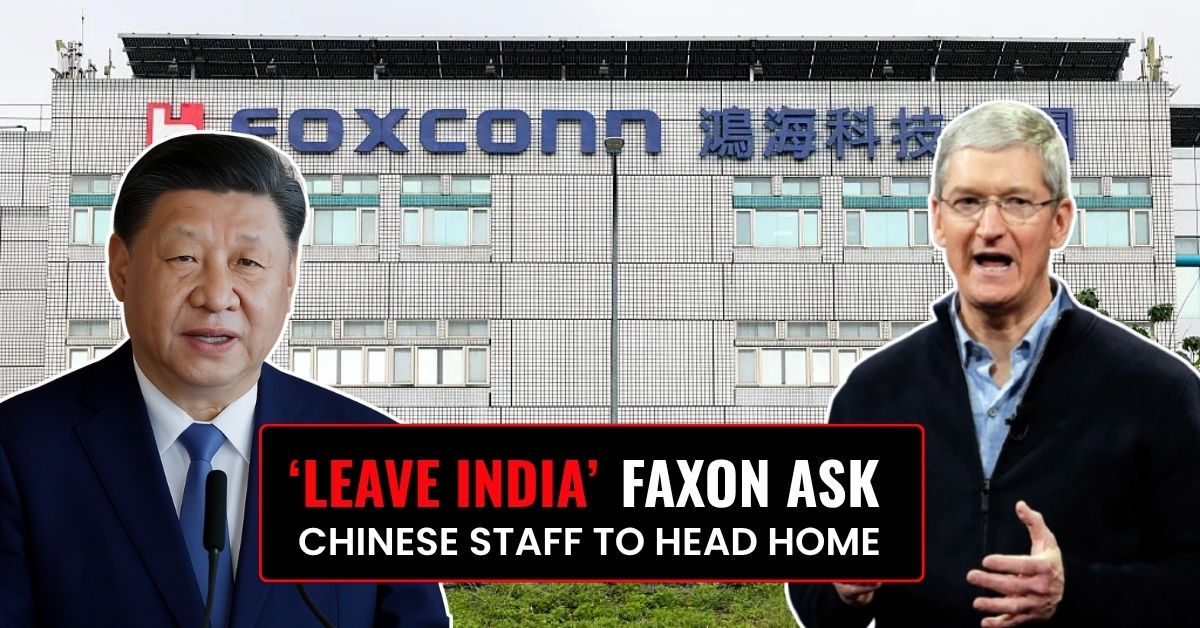Foxconn Chinese staff India exit has sent shockwaves through Apple’s manufacturing plans in India, with over 300 Chinese engineers recalled from Foxconn’s iPhone factories. Driven by China’s restrictions on technology and labor exports, this move threatens India’s rise as a global tech hub. This Startup INDIAX blog uncovers the reasons behind this exodus, its impact on iPhone 17 production, and the geopolitical forces at play. Learn how India can navigate these challenges and what it means for entrepreneurs and tech professionals. Stay updated with Startup INDIAX for cutting-edge startup and tech insights.
Table of Contents
Why Are Foxconn’s Chinese Staff Leaving India?
What Triggered the Recall of Over 300 Chinese Engineers?
Foxconn, Apple’s primary iPhone assembler, has recalled over 300 Chinese engineers and technicians from its factories in Tamil Nadu and Karnataka, India. This mass exit, which began two months ago, has left primarily Taiwanese support staff on-site. According to Bloomberg, the move aligns with China’s strategic efforts to restrict technology transfers and skilled labor exports to countries like India and Southeast Asia. Beijing’s informal directives to regulatory agencies aim to retain manufacturing expertise within China, especially as global tech giants like Apple shift production away from the country.
This isn’t just a corporate reshuffle, it’s a calculated geopolitical maneuver. Posts on X suggest China’s intent to hinder India’s manufacturing ambitions, with some users calling it a “deliberate attempt to curb tech transfer.”
How Is China’s Policy Impacting This Exodus?
China’s restrictions go beyond personnel. Reports indicate Beijing has blocked exports of specialized equipment and even prevented Chinese workers with valid visas from traveling to India. For example, Rest of World noted that shipments of critical manufacturing machinery to India have been delayed. These actions reflect China’s broader strategy to maintain its dominance in global tech manufacturing amid U.S.-China trade tensions and India’s push to attract tech giants with incentives like the Production Linked Incentive (PLI) scheme.
Startup INDIAX has been tracking this trend, highlighting how China’s policies could disrupt India’s goal of becoming a global electronics hub.
How Does This Affect Apple’s Manufacturing in India?
Will iPhone 17 Production Face Delays?
Apple’s ambitious plan to produce the iPhone 17 in India is at risk. Foxconn’s factories in Sriperumbudur and Bengaluru are critical to this effort, but the loss of Chinese engineers—who were instrumental in setting up production lines—could reduce assembly line efficiency. Bloomberg reports that while product quality is unlikely to suffer, production timelines may be delayed, especially as Foxconn builds a $2.8 billion plant near Bangalore, known as ‘Project Elephant.’ This facility aims to be Foxconn’s second-largest globally, but the absence of skilled workers could slow its ramp-up.
India produced $14 billion worth of iPhones in FY2024, with 97% exported to the U.S. Any disruption could jeopardize Apple’s goal of manufacturing most U.S.-bound iPhones in India by late 2026.
Why Were Chinese Engineers Critical to Foxconn’s Operations?
Chinese engineers brought decades of expertise from China’s optimized factories, playing a vital role in training Indian workers and ensuring high-precision manufacturing. Apple CEO Tim Cook has emphasized the “irreplaceable expertise” of Chinese assembly workers, noting their skills go beyond cost advantages. Their sudden exit could slow the transfer of technical know-how, potentially increasing production costs and delaying skill development for India’s workforce.
What Are the Broader Implications for India’s Tech Ambitions?
Can India Sustain Its Manufacturing Growth?
India has made significant strides, now accounting for 20% of global iPhone production a remarkable feat in just four years. Foxconn’s investments, including a $1.5 billion plant in Tamil Nadu and a $435 million semiconductor facility, underscore India’s potential. However, the recall of Chinese staff threatens this momentum. Economic expert Surya Kanegaonkar warned on X that China’s move is a “calculated attempt” to block India’s electronics manufacturing growth, especially given India’s reliance on Chinese components and expertise.
India’s visa restrictions on Chinese nationals and bans on apps like TikTok further complicate matters, limiting access to Chinese expertise. This could delay Apple’s 2026 target and hinder India’s ambition to rival China as a tech manufacturing hub.
How Can India Bridge the Expertise Gap?
To counter this setback, India must accelerate local workforce training and reduce dependence on foreign expertise. Foxconn is already deploying Taiwanese and Vietnamese engineers and enhancing training for Indian workers. The Indian government is offering $2.7 billion in subsidies for components like batteries to boost local manufacturing. As Startup INDIAX notes, long-term investments in education and R&D are critical to building a self-sufficient tech ecosystem.
What Is Foxconn Doing to Mitigate the Impact?
Are Taiwanese and Vietnamese Staff Stepping In?
Foxconn is addressing the gap by bringing in Taiwanese and Vietnamese engineers to replace Chinese staff. Analyst Ming-Chi Kuo noted that Taiwanese workers, who led much of Foxconn’s India setup, could minimize disruptions. Additionally, Foxconn is retrofitting machinery to support English-speaking Indian workers, with deliveries expected soon. However, the loss of Chinese managers, who were key to training, may still impact short-term efficiency.
How Are Equipment Delays Being Addressed?
China’s restrictions on equipment exports pose another challenge. Specialized machinery, critical for high-tech manufacturing, is being held up, and India lacks the technology to produce it locally. Foxconn is working with suppliers to adapt equipment and exploring alternative sourcing, but these efforts will take time.
How Do Global Geopolitics Shape This Move?
What Role Do US-China Tensions Play?
The Foxconn Chinese staff India exit is tied to broader U.S.-China trade tensions. Former U.S. President Donald Trump’s tariffs and threats of a 25% duty on non-U.S.-made iPhones have pushed Apple to diversify its supply chain to India and Vietnam. China’s response restricting labor and equipment exports aims to maintain its manufacturing dominance. This creates a complex landscape for Apple, balancing geopolitical risks and operational needs.

Can India Achieve Apple’s 2026 Vision?
Despite the challenges, India remains a cornerstone of Apple’s strategy. Mobile exports crossed Rs 2 lakh crore in FY25, with iPhone shipments leading the way. Foxconn’s $2.2 billion investment and collaboration with the HCL Group for a semiconductor plant signal long-term commitment. However, success depends on overcoming talent and equipment shortages. The Indian government is monitoring the situation, and analysts like Prachir Singh from Counterpoint Research remain optimistic, forecasting double-digit growth in India’s smartphone manufacturing.
Conclusion: The Road Ahead for India’s Tech Ecosystem
The Foxconn Chinese staff India exit underscores the intricate interplay of geopolitics, technology, and global supply chains. For entrepreneurs and startup founders, this is a wake-up call to build resilient, self-sufficient ecosystems. Startup INDIAX invites you to share your insights in the comments, explore more tech stories on our platform, or connect for the latest industry updates. How can India strengthen its tech manufacturing amid these challenges? Let’s start the conversation!
FAQs
Why are Chinese engineers leaving Foxconn’s India factories?
China’s restrictions on technology and labor exports, aimed at retaining manufacturing expertise, prompted Foxconn to recall over 300 engineers.
How will this impact iPhone 17 production in India?
The exit may reduce assembly line efficiency, potentially delaying iPhone 17 production timelines, though quality is expected to remain intact.
Can India overcome the loss of Chinese expertise?
Yes, by training local workers, leveraging Taiwanese and Vietnamese staff, and investing in R&D, though it will require time and investment.
What role does geopolitics play in this move?
U.S.-China trade tensions and China’s efforts to curb tech transfers to India are driving the recall, impacting global supply chain diversification.
Will this affect India’s goal to become a tech manufacturing hub?
The exit poses challenges but also opportunities to build a self-sufficient workforce, supported by government incentives and Foxconn’s investments.


1 comment
Great post! The way you explained everything step by step makes it easy to understand even for beginners. Looking forward to more content like this.